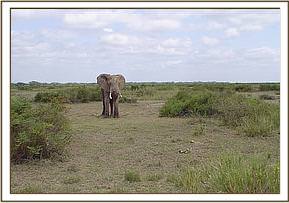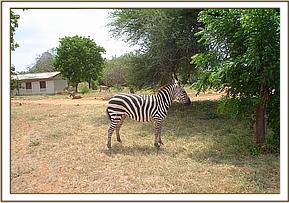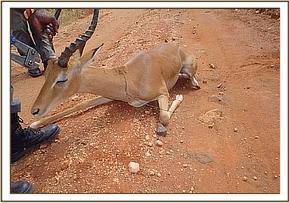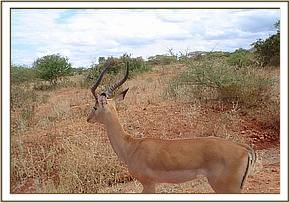The month of May was also quiet just like the pervious two months
The month of May was also quiet just like the pervious two months. We visited all the areas under our jurisdiction except Shimba Hills National Reserve. The animals in the areas visited were observed to be healthy and no cases of injuries or sickness were seen or had been reported to the respective park management. The reduced case load can be attributed to the widely available browse and water in the parks following the recent rains thus reducing the incidences of wildlife-human conflicts. After the rains the animals also became widely dispersed and difficulty to see. Enquires on the cases treated previously were made. Most of these animals are no longer sighted and/or they have become difficult to identify after recovery. Most of them had favourable prognosis and have recovered by now.
The unit was called for two cases only; Amboseli on 12th and Manyani KWS Field Training School within Tsavo West Park on 20th. This report also includes the case of an impala carrying a snare around its neck that was attended to on 1st June near Voi gate. It was decided to include this case in the May report rather than wait until the end of June.
The case in Amboseli was of an elephant bull reportedly seen with a swollen left hind leg by rangers. However and to our great disappointment, the said elephant was absolutely normal and no abnormality was detected when we arrived. The rangers had been monitoring it before our arrival and were able to identify it positively. It had been seen at the same spot for a prolonged period of time. They reported observing that the lower left hind leg around the pastern joint was swollen and thought this is what made it immobile. This information was relayed to their seniors who called us before confirmation. We found it ambulating and browsing normally. There was no injury or swelling according to our assessment.


The report from Manyani was of an adult female zebra that had a swelling due to an abscess on the ventral (lower part) of the abdomen. The cause was not clear but was probably trauma from a blunt object like a tree stump as there were small and superficial areas of injuries around the swelling. The animal was immobilised with a mixture of Etorphine Hcl and Xylazine Hcl in the same dart propelled by the Dan-Inject dart rifle. Time to recumbency was 5 minutes. The abscess was lanced, squeezed, then profusely flushed with hydrogen peroxide to remove the entire puss and other dead material before being cleaned with water and infused with a dilute solution of Lugol’s iodine.




The report of the impala was received on the morning of 1st June from a KWS driver. We responded immediately and located it in a bachelor herd of about 20 just outside the park fence near the Red Elephant lodge. The area was bushy and the terrain difficult. This made approach to within darting distance extremely difficult. We tried driving them out into an open area to no avail. Dart placement was achieved after nearly 3hours. The immobilisation drugs were composed of Etorphine and Xylazine Hcl. The animal ran towards the park but went down just before crossing the boundary fence. The wire snare was about a day or two old, was loose and had not inflicted any injury. It was removed and the animal revived with the appropriate antidotes.


